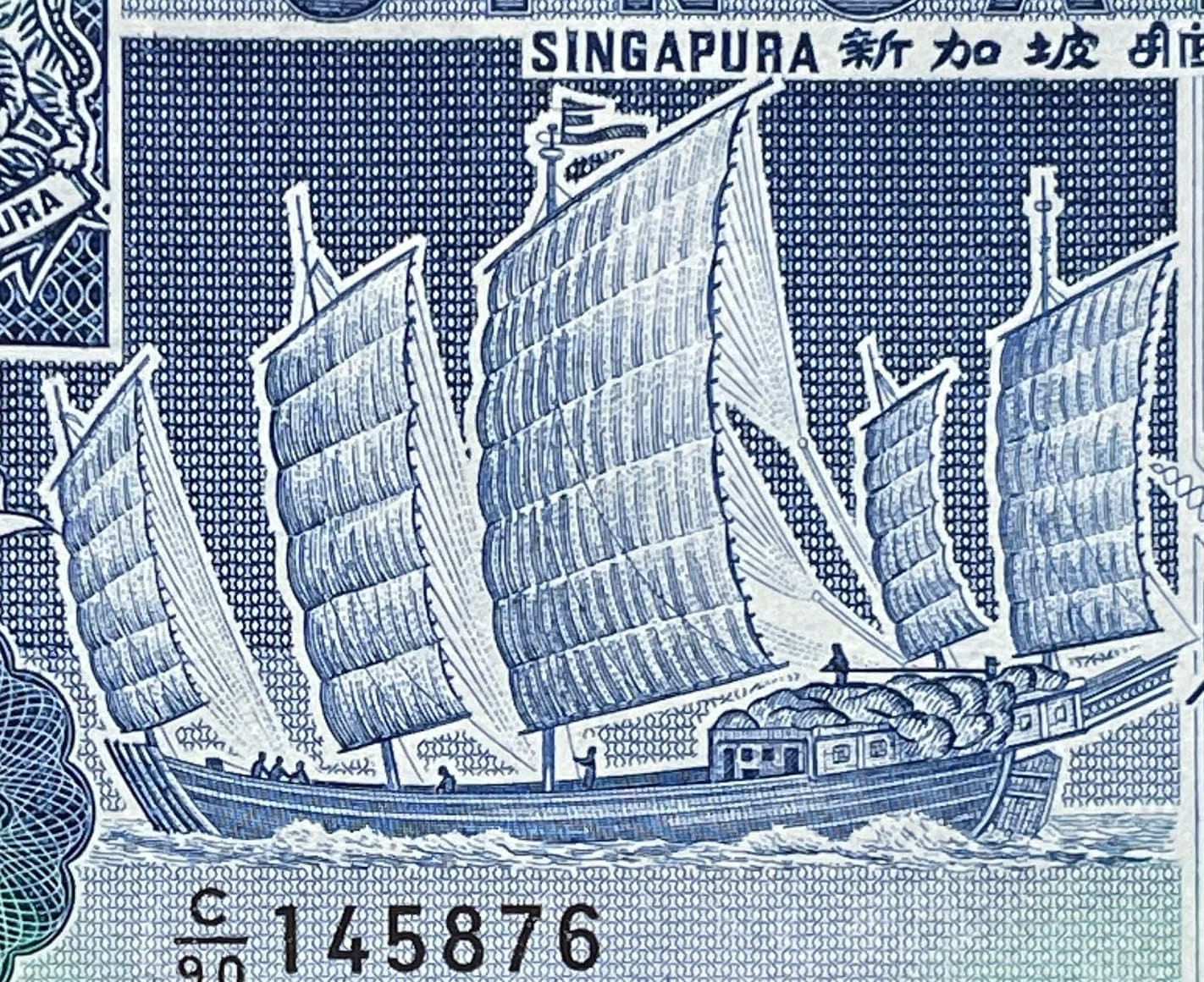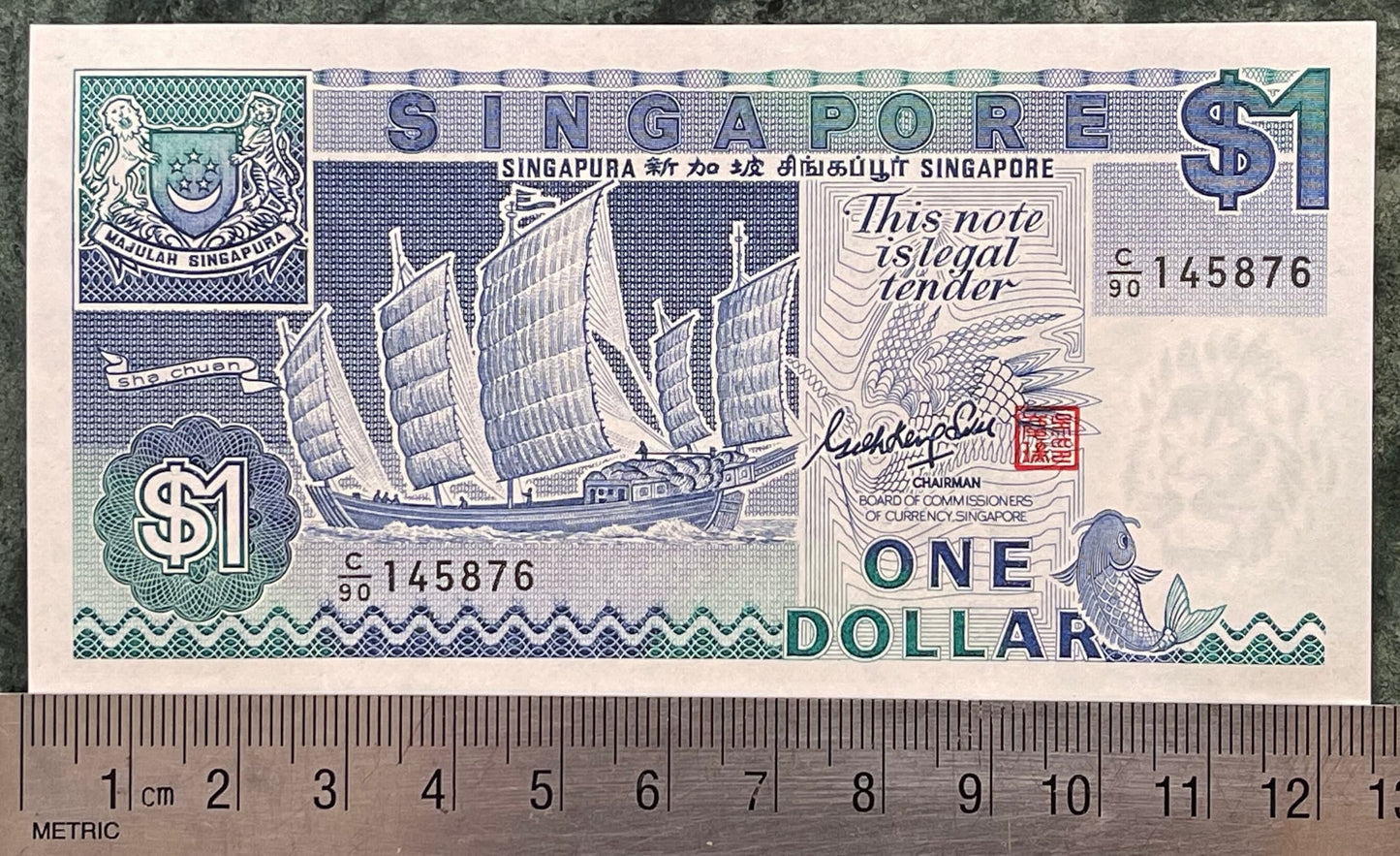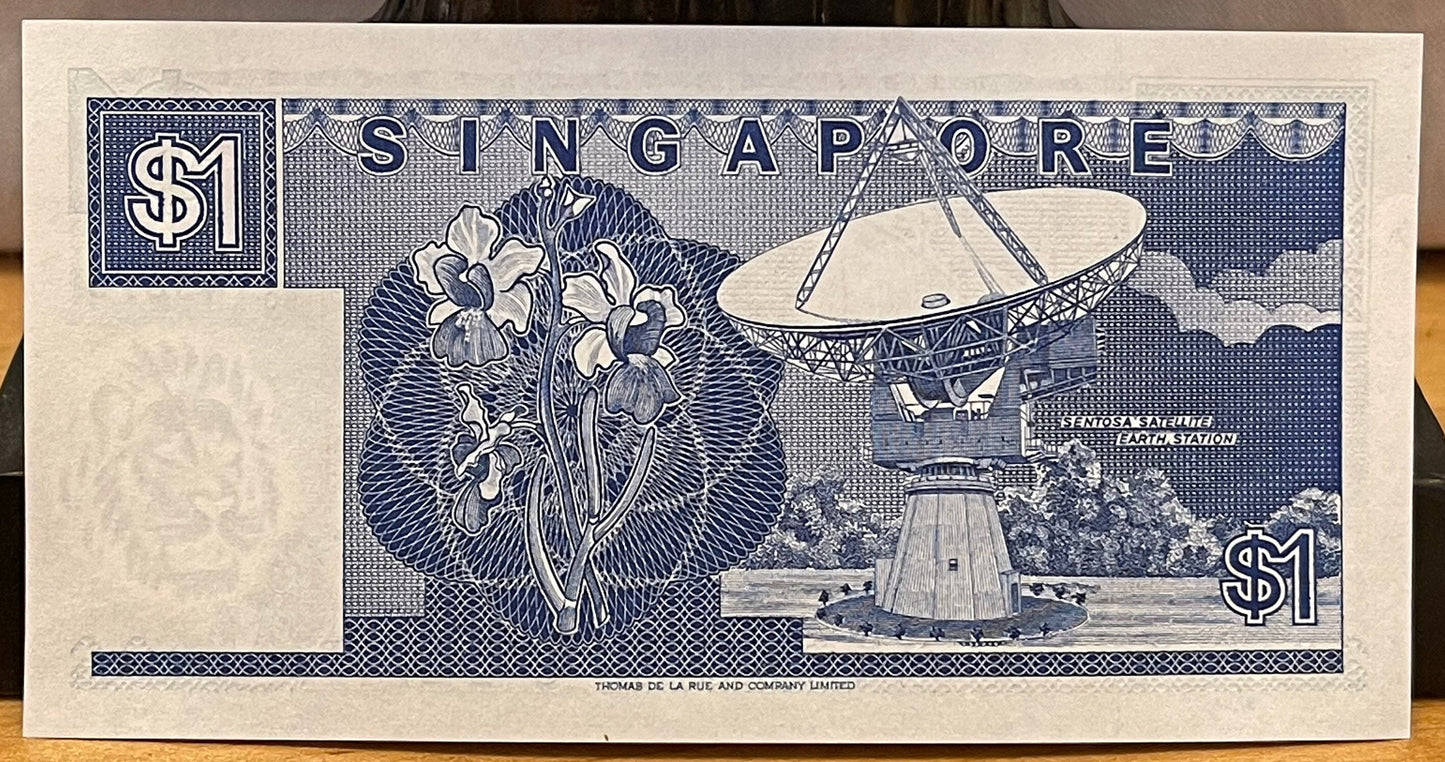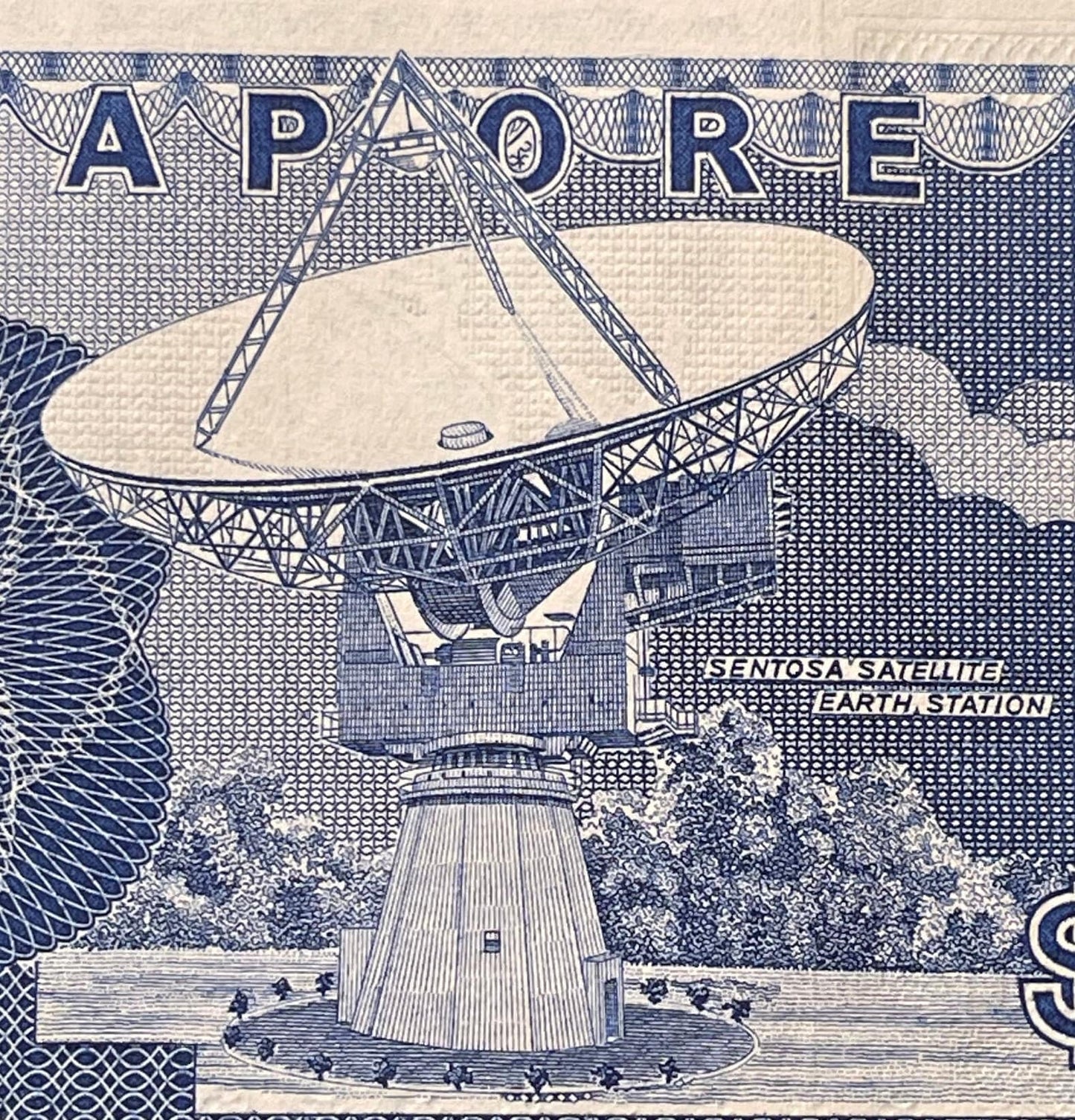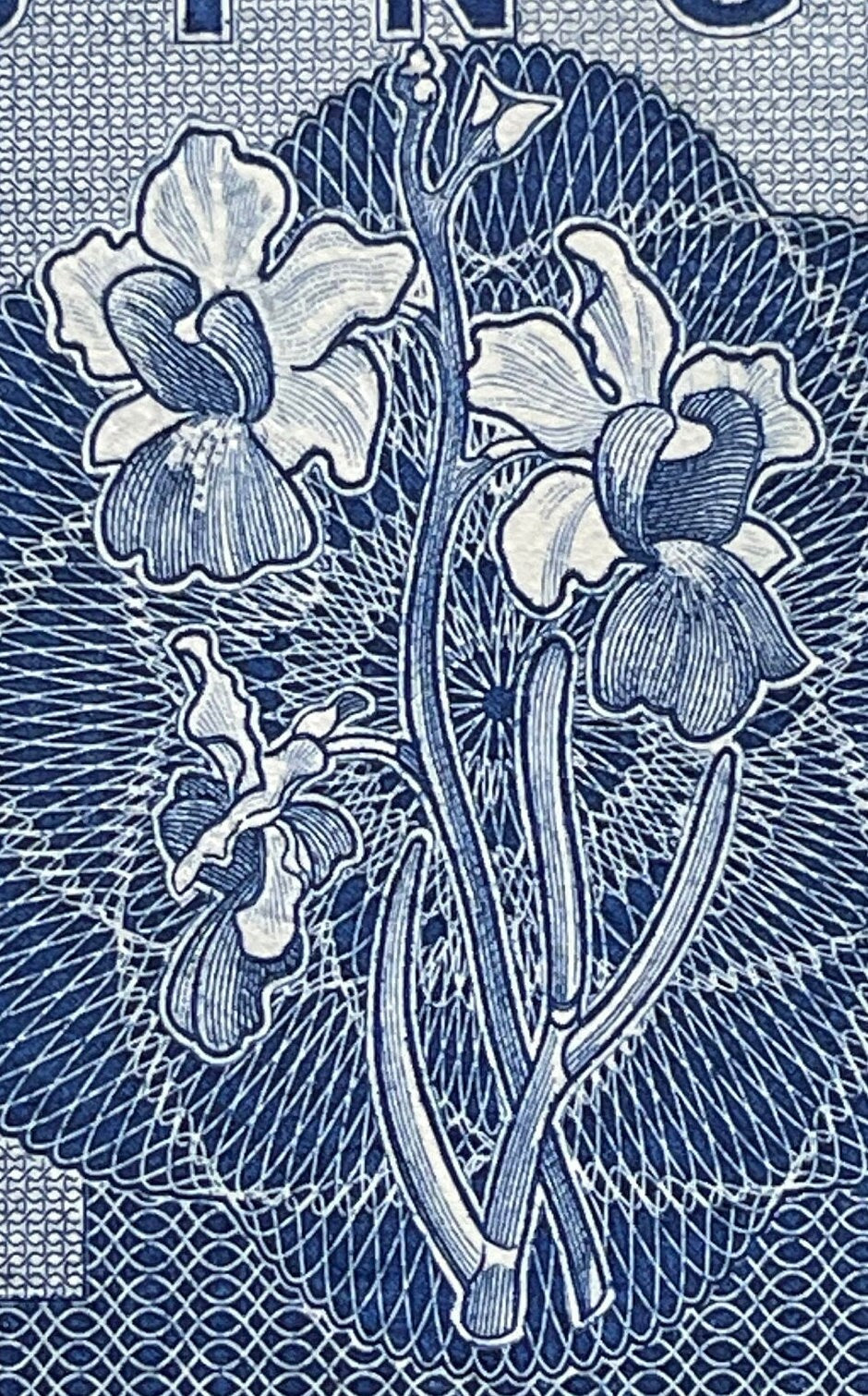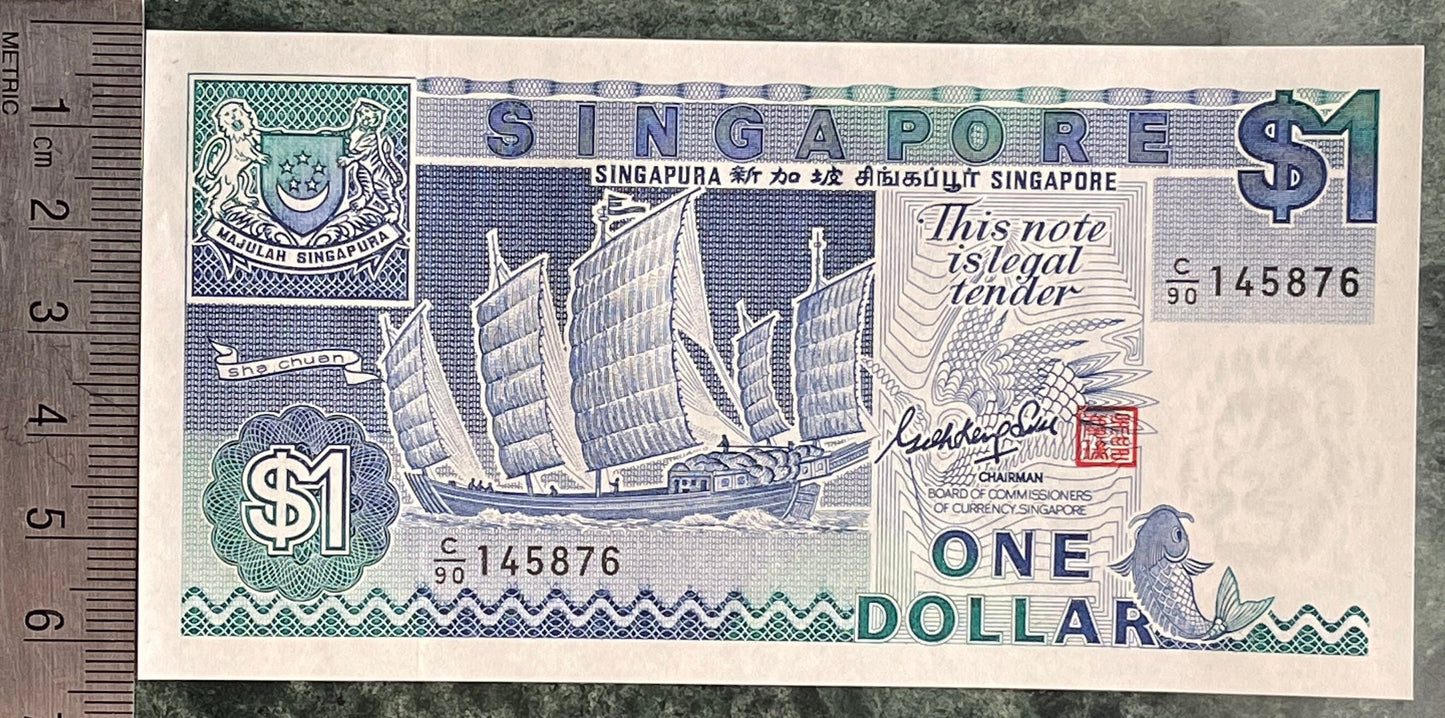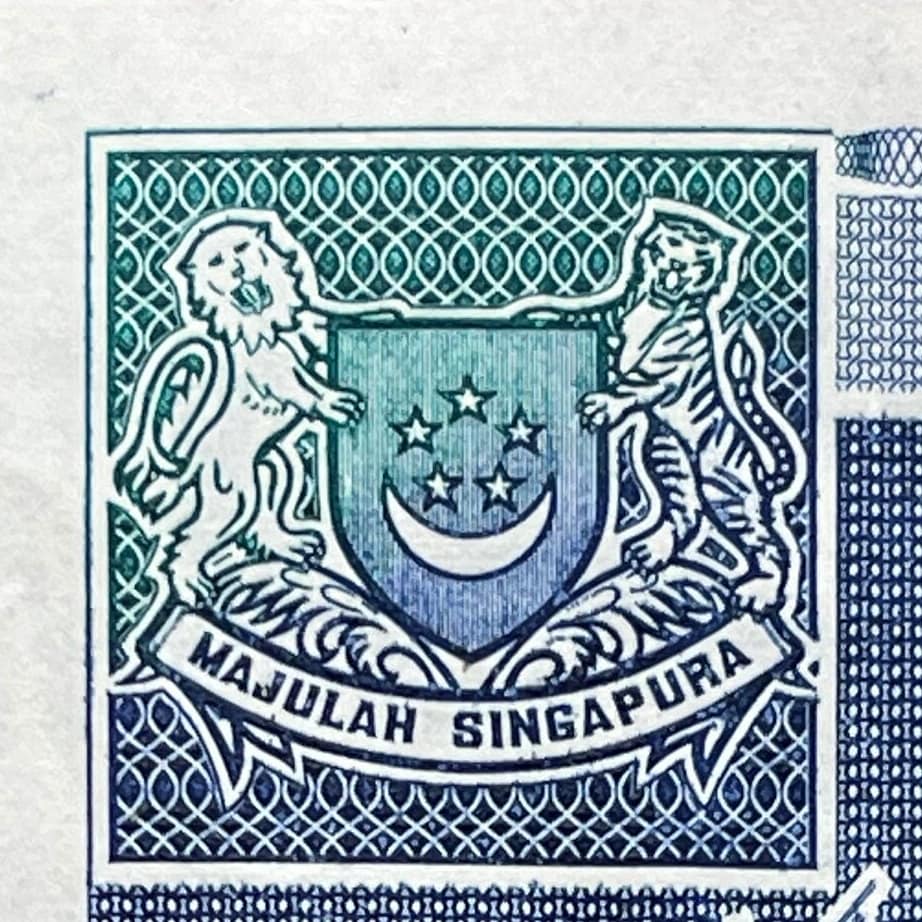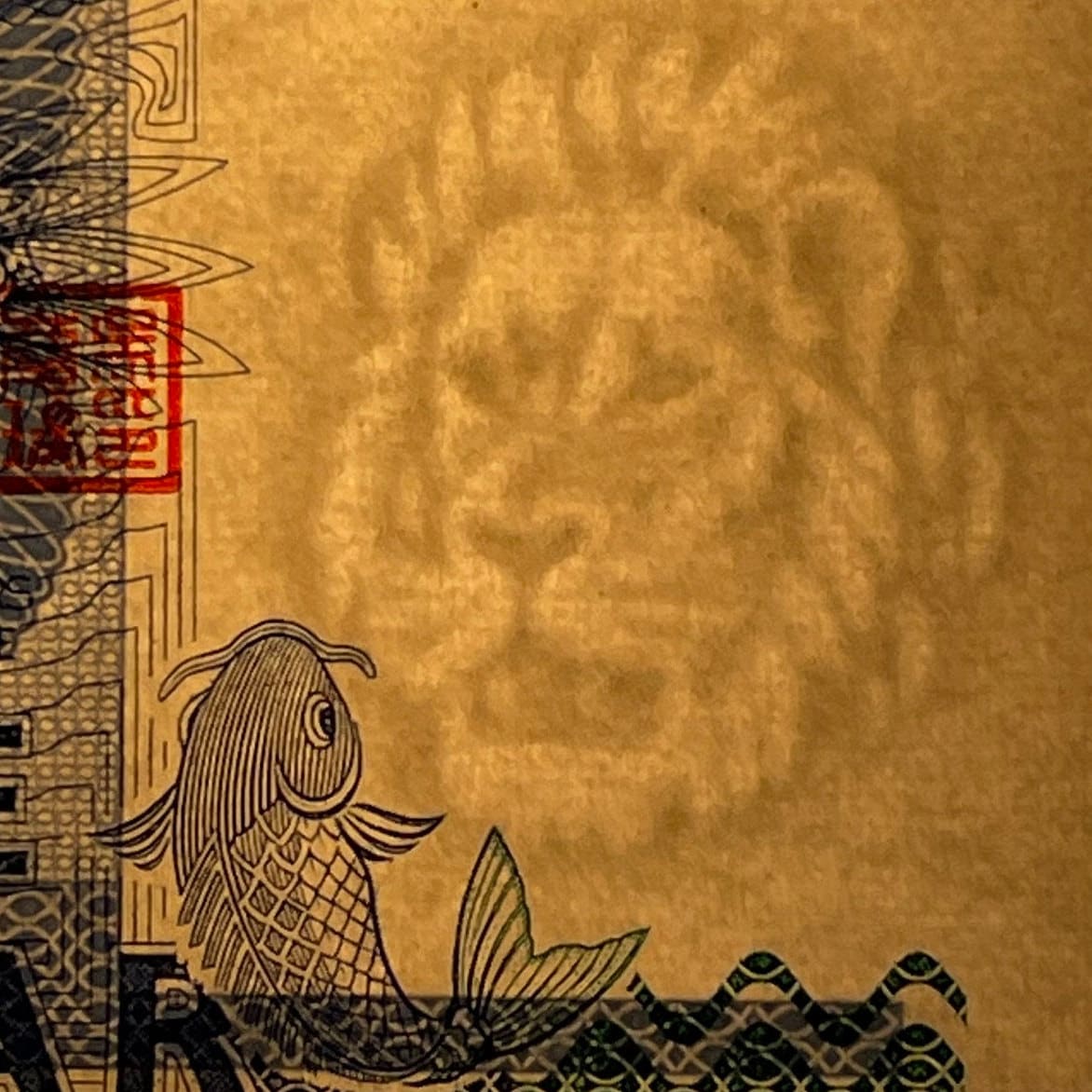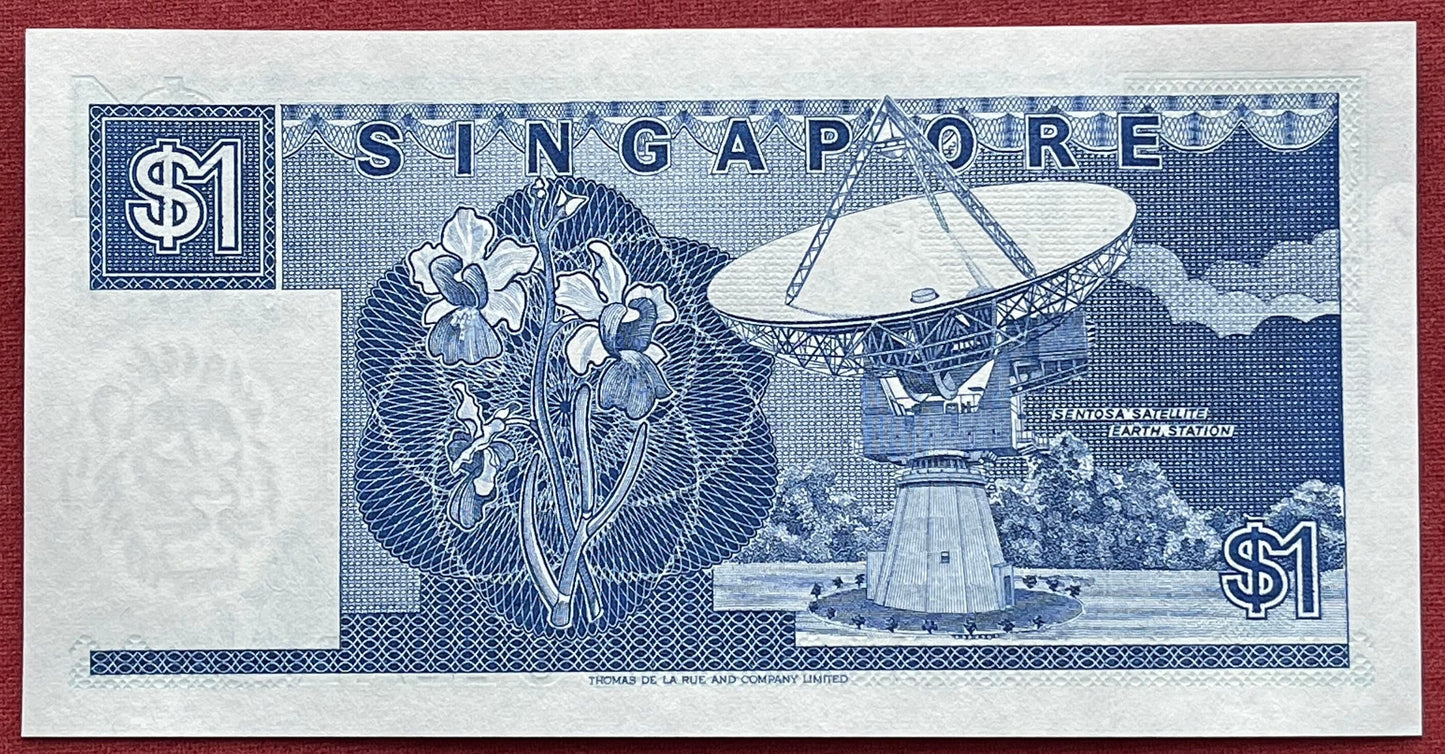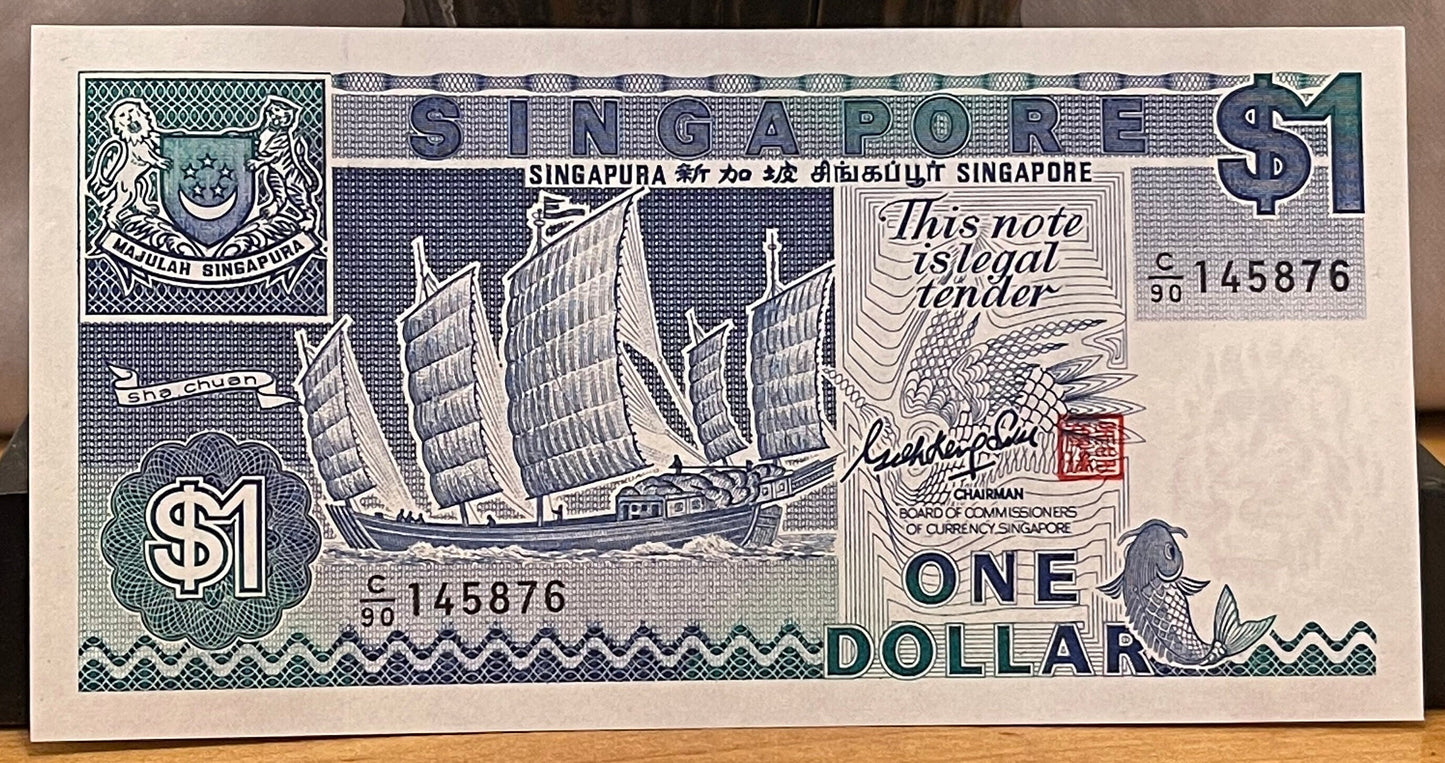elemintalshop
Sha-ch'uan Trading Junk & Sentosa Satellite Earth Station 1 Dollar Singapore Authentic Banknote Money for Jewelry and Collage (Orchid) 1987
Sha-ch'uan Trading Junk & Sentosa Satellite Earth Station 1 Dollar Singapore Authentic Banknote Money for Jewelry and Collage (Orchid) 1987
Couldn't load pickup availability
Sha-ch'uan Trading Junk & Sentosa Satellite Earth Station 1 Dollar Singapore Authentic Banknote Money for Jewelry and Collage (Orchid) (Lion Head) (1987)
Obverse: Sha-ch'uan five-masted whaleback trading junk (also called "sand boat").
Stylised Chinese Crane in centre panel.
Chinese Carp fish at bottom right.
Scripts: Chinese (simplified), Latin, Tamil
Lettering: SINGAPORE
SINGAPURA 新加坡 சிங்கப்பூர் SINGAPORE
This note
is legal tender
sha chuan
CHAIRMAN
BOARD OF COMMISSIONERS
OF CURRENCY SINGAPORE
ONE
DOLLAR
Reverse: Singapore's national flower, the Vanda Miss Joaquim Orchid, at left.
Sentosa Satellite Earth Station at right.
Lettering:
SINGAPORE
SENTOSA EARTH
SATELLITE STATION
Watermark: Lion's Head
Comments: Ship series, the third set of notes issued for circulation in Singapore from 1984 to 1999.
Features
Issuer Singapore
Period Republic (1967-date)
Type Standard banknote
Year 1987
Value 1 Dollar
1 SGD = USD 0.74
Currency Dollar (1967-date)
Composition Paper
Size 125 × 63 mm
Shape Rectangular
Number N# 202934
References P# 18
*******
"Whaleback" Chinese Junks
A sha-ch'uan or sand boat.
Some aspects of the design and construction of Chinese junks are pretty familiar: one the best known is the use of numerous bulkheads rather than frames to provide transverse strength and divide the vessel into a series of watertight compartments. Others are the lifting or retractable rudder, and of course the fully-battened lugsails that are almost synonymous with the term "junk." One design and construction element that is not so well known, though, is the whaleback shape of the hull on many junks.
One type exhibiting the whaleback was the sha-ch'uan, or sand boat, which was in use well into the 20th century. These bluff-bowed Kiangsu traders typically measured 85' LOA and 18.5' beam, and were distinct from larger traders of the same port by generally finer lines.
Among the more obvious features of the sha-ch'uan is the five-masted rig, in which only two of the masts were stepped along the vessel's centerline, and all of which were raked at different angles, so that they were splayed like the fingers of an open hand.
The hull-proper angles sharply inboard from a chine that is well above the waterline and might almost be called a sheerline. Worcester calls this top surface a "guard deck," but from a construction standpoint, it's really the upper surface of an all-around hull, like that of a submarine's (although it is pierced by numerous hatches). The main deck is added atop the guard deck, and there are planks, apparently enclosing dead space, that fill the gap between the guard deck and the overhanging ends of the main deck.
With its extreme tumblehome, the whaleback junk seems to give up a lot of storage capacity compared to Western ship design, in exchange for superior safety. Should the junk's entire upper deck and house be swept away, its hull would remain intact and enclosed. There were numerous incidents of Western-style wooden ships losing their houses in storms and sinking as a result.
Although the sha-ch'uan had no backbone, it did have a substantially thicker central plank that provided some longitudinal strength (and some lateral plane), aided by several half-round wales along the sides and three timbers running full-length along the top surface of the guard deck at both sides of the hatches. Rising well above the waterline was a false stern that extended 7 feet aft of the hull proper, and beyond that was a 10-foot-long stern gallery.
The sha-ch'uan was by no means the only whaleback junk.
Source: http://indigenousboats.blogspot.com/2014/06/whaleback-chinese-junks.html
*******
Wikipedia:
Papilionanthe Miss Joaquim, also known as the Singapore orchid, the Princess Aloha orchid and formerly as Vanda Miss Joaquim, is a hybrid orchid (a grex) that is the national flower of Singapore. For its resilience and year-round blooming quality, it was chosen on 15 April 1981 to represent Singapore's uniqueness and hybrid culture.
History
The orchid was known for a long time by its synonym Vanda Miss Joaquim. Ashkhen Hovakimian (Agnes Joaquim) found this orchid which bears her name in a clump of bamboo. It was recognised as a hybrid not only by orchid expert Henry Ridley in 1893 and again in 1896, but by other contemporary orchid growers as well as orchid journals including the Orchid Review. Sander's Complete List of Orchid Hybrids, which distinguished between natural and artificial hybrids, listed Vanda Miss Joaquim as an artificial hybrid. Vanda Miss Joaquim is a cross between the Burmese Vanda teres (now called Papilionanthe teres) and the Malayan Vanda hookeriana (now called Papilionanthe hookeriana). It was not known which of the two species produced the seeds and which one provided the pollen. The hybrid was shown to Henry Ridley, the director of the Singapore Botanic Gardens. Ridley examined it, had it sketched and sent a description to the Gardeners' Chronicle writing that: "A few years ago Miss Joaquim, a lady residing in Singapore, well known for her success as a horticulturist, succeeded in crossing Vanda hookeriana Rchb. f., and V. teres, two plants cultivated in almost every garden in Singapore."
On 15 April 1981, Singapore Minister for Culture S. Dhanabalan proclaimed the species to be Singapore's national flower.
*********
Wikipedia:
The Sentosa Satellite Earth Station (Chinese: 圣淘沙卫星地面站; Malay: Stesen Satelit Bumi Sentosa) is Singapore's first satellite earth station. The station is located at Sentosa Island. It was established on 23 October 1971. The second antenna was built two years later in 1972 as more traffic grows. This station is managed and owned by SingTel.
A ground station, Earth station, or Earth terminal is a terrestrial radio station designed for extraplanetary telecommunication with spacecraft (constituting part of the ground segment of the spacecraft system), or reception of radio waves from astronomical radio sources. Earth stations communicate with spacecraft by transmitting and receiving radio waves in the super high frequency (SHF) or extremely high frequency (EHF) bands (e.g. microwaves). When a ground station successfully transmits radio waves to a spacecraft (or vice versa), it establishes a telecommunications link. A principal telecommunications device of the ground station is the parabolic antenna.
Share
